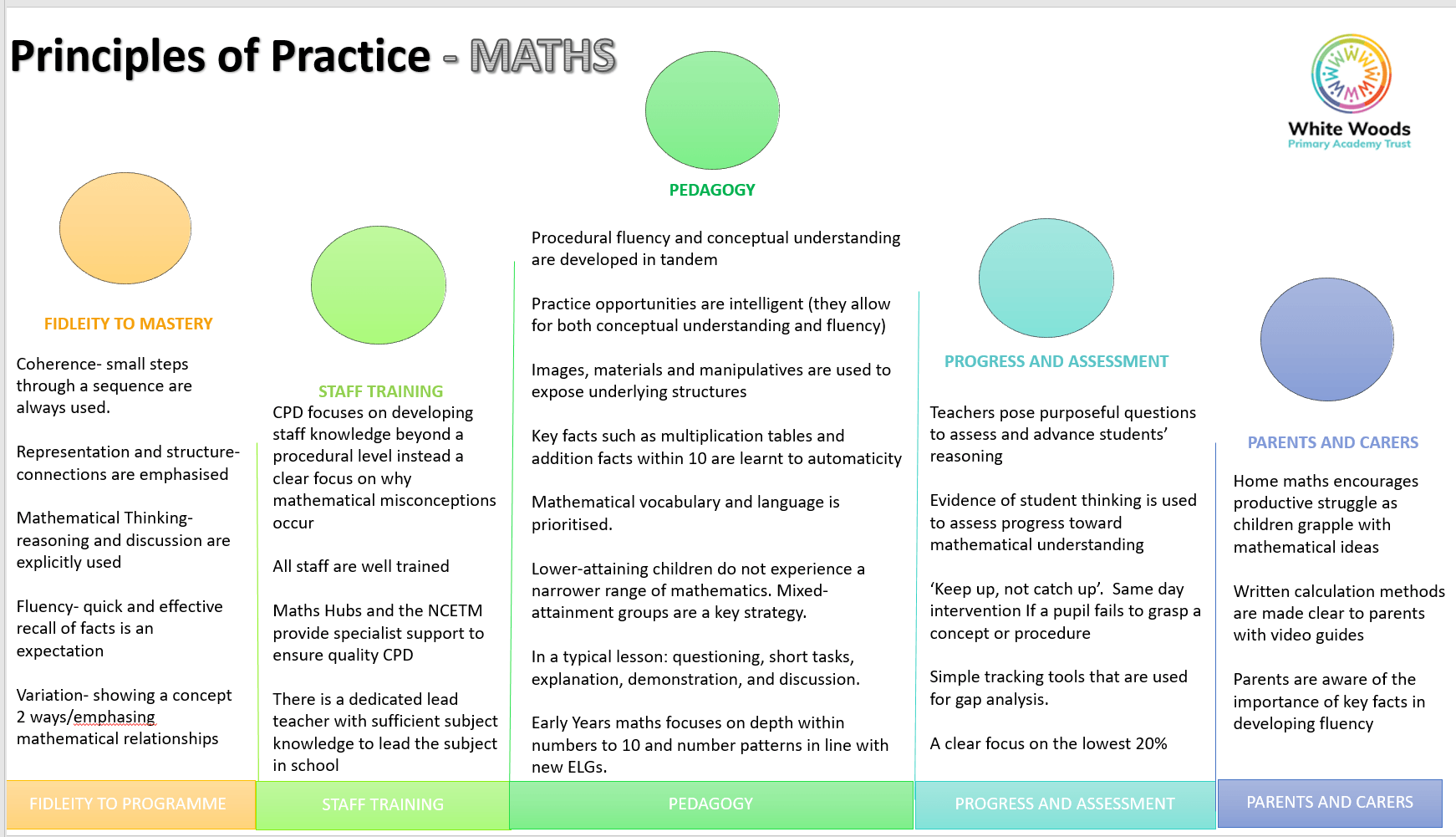Curriculum Intention
A curriculum is never finished and that there will always be improvements to make to content choice, the sequencing of lessons and fidelity to the discipline of each subject. We are a reading school. Our core belief is that reading is the key to the door for a child in later life. Above all else, We want to ensure children are skilled readers with excellent background knowledge when they leave Whiston Worrygoose. We follow the National Curriculum for all our subjects to ensure our curriculum is robust.
Schema development
We teach most subjects as discreet subjects with an aim of preserving the unique nature of each subject and allowing children to see that nature clearly, giving them a better understanding of each. The risk, however, is children seeing subjects as disconnected silos. We therefore aim to adopt a measured approach that retains subject disciplines but makes connections where they are appropriate. These can be at the same time of year (for example studying Egyptian history and Egyptian art at the same time of year.
Substantive or Disciplinary knowledge?
We also give a great deal of thought to the difference between substantive and disciplinary knowledge. There is more to a subject than the information, facts and concepts that are taught and learned. These things are substantive knowledge. Disciplinary knowledge focuses on what it is that historians / scientists / geographers / French speakers / programmers actually do in order to preserve the discipline in each subject and make it about more than substantive knowledge . By following the national curriculum this helps us clarify the disciplinary aspect of each curriculum subject.
When making any decisions about how we implement our medium term curriculum plans we are heavily influenced by the work of Dylan Williams:
KEY CONCEPTS
We have worked hard to establish our key concepts in each subject area. This has taken time and a lot of reading as well as making use of knowledge bases such as the historical association and leading thinkers in their respective subjects. We like to think of a key concept as 'growing' through carefully chose units of work in each year group. Thinking in this way helps us establish the mots important knowledge we ensure each pupil acquires through a specific unit of work.
This diagram shows an example of a key concept in our history curriculum:
Principles of Practice
Staff need to have autonomy over their working practices. This is a challenge for school leaders because there also needs to be an element of consistency because otherwise, children in different classes may get a different quality of education.
The trick is to be consistent to principles and active ingredients of strategies but allow autonomy in how those are enacted. Staff need to experience success through mastering the craft of teaching. Their purpose needs to align with the school’s and they need to feel that they belong to the team and the community.
Within each subject area we therefore identify 'Principles of Practice'.
We advocate an approach that champions simplicity, regularity and quality
The most important driver of outcomes for children is the quality of teaching. We aim to ensure all staff have a strong mental model of what quality education entails including how to establish and maintain it. This mental model will consist of at least:
- Effective curriculum design
- Evidence based teaching strategies
- School leaders knowing what What makes effective CPD





